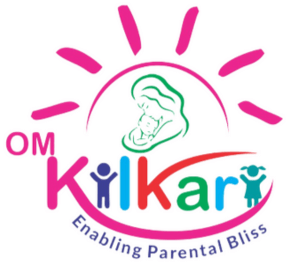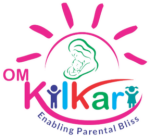The first day of preschool marks a significant milestone – for your child and for you! It’s a thrilling step towards independence, social growth, and learning, but it can also stir up anxieties for both parties. With thoughtful preparation, you can transform those first-day jitters into confident excitement. Drawing on expert advice from child psychologists, early childhood educators, and seasoned parents, here’s your comprehensive guide to preparing your child for preschool success.
Phase 1: Laying the Foundation (Months Before)
- Foster Independence Skills: Preschool requires basic self-help skills.
- Potty Training: Aim for consistent independence. Accidents happen, but being mostly trained reduces stress. Practice pulling pants up/down independently.
- Handwashing: Teach the proper soap-and-water routine (sing the ABC song!).
- Dressing: Encourage putting on/taking off shoes, jackets (start with Velcro!), and simple clothing. Practice zippers and buttons.
- Feeding: Ensure they can manage opening lunch containers, using utensils effectively, and drinking from an open cup or straw. Pack practice lunches at home!
- Tidying Up: Make cleaning up toys a natural part of playtime routines.
- Build Social & Communication Muscles:
- Playdates: Arrange regular playdates with peers. Practice sharing toys, taking turns (use timers!), and navigating minor conflicts with your gentle guidance. Focus on cooperative play.
- Expressing Needs: Encourage using words (not just gestures or cries) to express needs like “I need help,” “I’m hungry,” “I have to go potty,” or “I feel sad.”
- Following Simple Instructions: Play games like “Simon Says” or give 2-step directions during daily tasks (“Please put your cup on the table and bring me your shoes”).
- Introduce the Preschool Concept:
- Talk Positively: Casually mention preschool in excited tones. “Soon you’ll get to go to preschool! You’ll play with new friends, paint pictures, sing songs, and hear fun stories!”
- Read Books: Find picture books about starting preschool. Discuss the characters’ feelings and experiences. (Examples: “The Kissing Hand” by Audrey Penn, “Llama Llama Misses Mama” by Anna Dewdney, “Maisy Goes to Preschool” by Lucy Cousins).
- Drive By: Point out the preschool building during walks or drives. “Look, that’s where your preschool will be! See the playground?”
Phase 2: Gearing Up (Weeks Before)
- Establish Rock-Solid Routines:
- Sleep Schedule: Preschool requires early mornings! Gradually shift bedtime and wake-up time to match the preschool schedule. Ensure they get adequate sleep (typically 10-13 hours for 3-5 year olds).
- Morning Routine: Practice the actual morning routine: waking up, getting dressed, eating breakfast, brushing teeth, packing a bag. Make it predictable and calm.
- Mealtimes: Align snack and lunch times with the preschool schedule as much as possible.
- Visit the Preschool & Meet Key People:
- Orientation/Tour: Attend any offered orientations. Explore the classroom, playground, and bathroom. Let your child touch toys and get comfortable.
- Meet the Teacher: If possible, arrange a brief meet-and-greet. Help your child learn the teacher’s name. Talk about the teacher positively at home.
- Spot the Important Places: Show them where they’ll put their bag, their cubby, and the bathroom.
- Role-Play Preschool Scenarios:
- Use dolls, stuffed animals, or yourselves to act out a preschool day: saying goodbye, circle time, snack time, asking the teacher for help, making a friend, singing songs, and being picked up.
- Focus especially on the goodbye and hello routines.
- Practice Separation:
- Short Separations: Leave your child with trusted caregivers (grandparents, friends) for gradually increasing periods. Start with 30 minutes, then an hour, then longer.
- Consistent Goodbye Ritual: Develop a quick, loving, and consistent goodbye routine (e.g., a special hug, a high-five, a kiss on the palm like “The Kissing Hand”). Crucially: Always say goodbye, never sneak out. Reassure them when you will return (“After snack and playtime, I’ll be right here to pick you up!”).
- Shop & Prepare Together:
- Backpack: Let them choose a simple, manageable backpack. Practice packing and unpacking it with a change of clothes, a comfort item (if allowed), and a lunchbox.
- Lunchbox & Containers: Ensure they can open everything independently. Practice at home.
- Label Everything: Clearly label all belongings (backpack, clothes, lunchbox, water bottle).
Phase 3: The Final Countdown & First Days
- The Night Before:
- Prep Together: Lay out clothes, pack the backpack and lunchbox together. Make it a calm, positive activity.
- Early Bedtime: Stick firmly to the established sleep schedule.
- Reassure & Read: Read a favorite preschool book and talk about the exciting things tomorrow will bring. Reiterate the pickup plan.
- The First Morning:
- Stay Calm & Positive: Your child will pick up on your energy. Project confidence and excitement, even if you feel nervous inside.
- Stick to Routine: Follow your practiced morning routine to minimize chaos.
- Nutritious Breakfast: Fuel them for a busy morning.
- The Drop-Off:
- Be Brief & Confident: Stick to your practiced goodbye ritual. Give a quick hug/kiss, say your goodbye phrase (“Have a great day! I love you! I’ll pick you up after story time!”), and leave confidently. Do not linger. Prolonging goodbye often increases anxiety.
- Trust the Teacher: Teachers are experts in handling transitions. They will comfort your child and engage them.
- Resist the Sneak Peek: If you linger outside or peek back in, your child may see you and get upset again.
- After Pick-Up:
- Be On Time: Punctuality is crucial, especially in the early days. Seeing you there reliably builds trust.
- Reconnect & Listen: Offer a big hug and your full attention. Ask open-ended questions (“What was something fun you played with today?” “Did you sing any new songs?”). Don’t bombard them; they might be tired. Listen more than you talk.
- Celebrate Effort: Acknowledge their bravery! “I’m so proud of you for going to preschool today!”
Expert Advice for Common Challenges:
- Tears at Drop-Off (Yours or Theirs): This is NORMAL. Teachers expect it. Stay consistent with your goodbye ritual. Tears usually subside within minutes after you leave. If your anxiety is high, call the school later to check in (they’ll tell you if they haven’t settled). Your confidence is key.
- Regression: Don’t be surprised if potty training slips or sleep is disrupted initially. Offer patience and comfort, not punishment. It’s a sign of stress, and they need your support.
- “I Don’t Want to Go!”: Validate their feelings (“It sounds like you’re feeling a bit nervous about school today, that’s okay”). Gently but firmly reiterate the expectation (“Preschool is where we go to learn and play. I know you can do it!”). Focus on a positive aspect (“Remember you wanted to finish that puzzle?” or “Ms. [Teacher] said they might play with playdough today!”).
- Communication with the Teacher: Establish open communication early. Share any concerns or relevant information about your child (sleep, big changes at home). Trust their observations and partner with them.
The Most Important Preparation: Your Mindset
- Manage Your Anxiety: Children are incredibly perceptive. If you radiate worry, they’ll sense it. Talk to other parents, the teacher, or a counselor about your own anxieties. Practice deep breathing before drop-off.
- Trust the Process: Adjustment takes time. It might be days or even a few weeks before your child settles in comfortably. Be patient.
- Focus on the Positives: Remind yourself (and your child) of the amazing benefits: new friends, new skills, growing independence, dedicated teachers, and fun experiences.
- Celebrate Small Wins: Getting dressed independently, trying a new food at snack, telling you one thing about their day – these are all victories!
Conclusion
Preparing for preschool is less about academic drills and more about nurturing confidence, independence, and resilience. By focusing on practical skills, emotional readiness, consistent routines, and a positive, trusting partnership with the preschool, you lay the groundwork for a successful and joyful start to your child’s educational journey. Remember, tears are temporary, but the confidence and love of learning gained in a positive preschool experience are lasting gifts. Take a deep breath, trust your child, trust the teachers, and celebrate this exciting new chapter!


